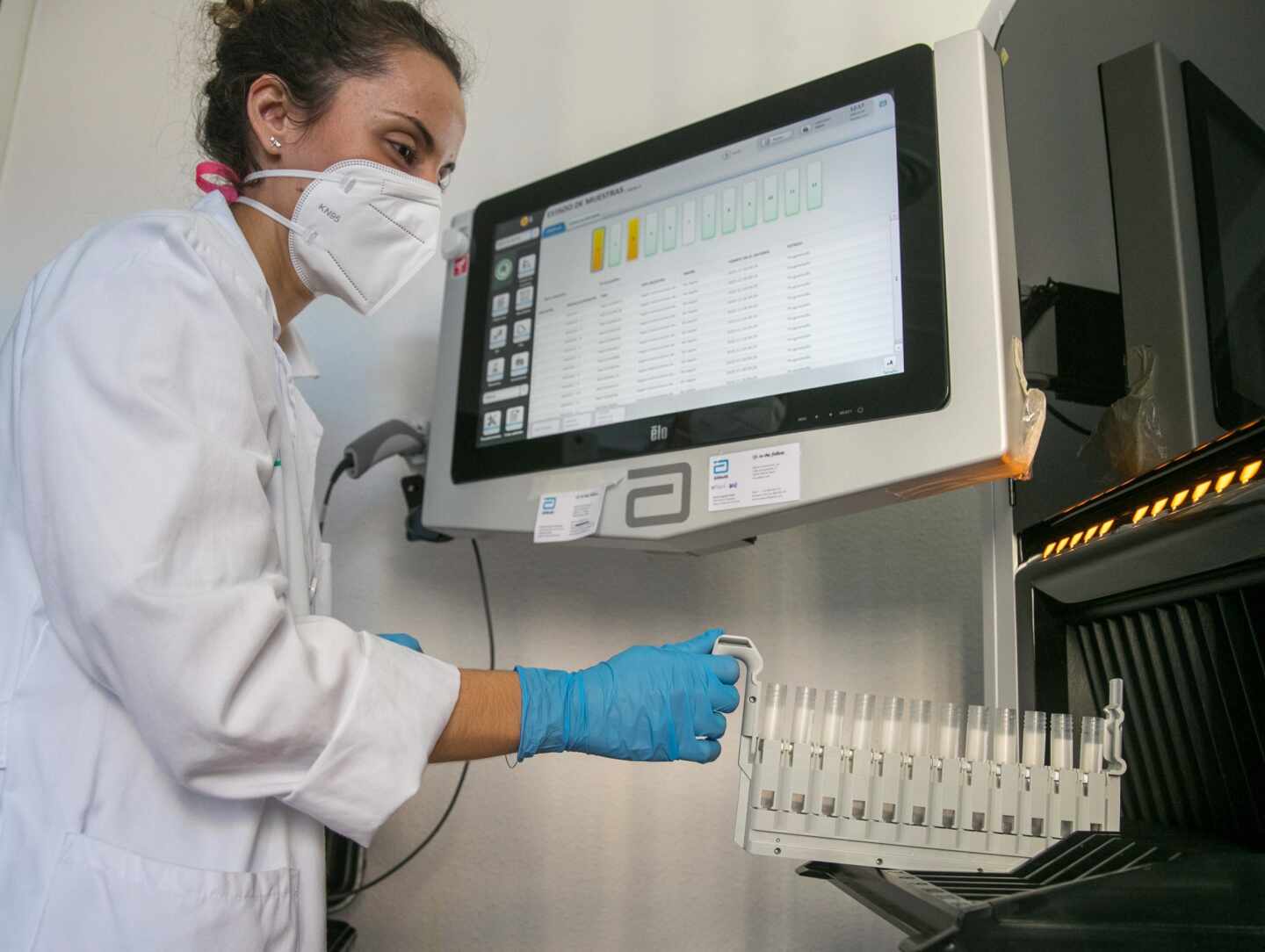While the sixth wave was still at its peak in Spain, in the second half of January, the pandemic raised new warnings. The subvariant ómicron – BA.2 – came into effect in some countries such as Denmark or the UK. Preliminary data suggest that it could be more infectious than its predecessor.
BA.2 is named “silent micron” because of its amino acid changes that render BA.2 unknown in the PCR commonly used to identify omicrons, namely thermofishers.
On January 25, Spain detected only the BA.2 sample and since then sequencing has followed the penetration of this new subvarie, which has also begun to assess whether it can evade the vaccine response or become more virulent.
From 0.2% Castilla y León to 19% Canary Islands
One month later, BA.2 made uneven progress in Spain and a recent variant report from the Ministry of Health gathered information from 10 autonomous communities that offered specific data on this subvariance.
In the last two weeks, the presence of BA.2 has increased significantly in the Canary Islands, but has decreased in Catalonia. The highest percentage of omicron subvariance cases occurred in the Canary Islands (19% of cases), followed by the Balearic Islands (9.8%) – both with travelers – and Galicia (9.6%). On both islands, two weeks ago BA.2 cases were less than 1%.
| Autonomous community | BA.2 week percentage 4 | BA.2 week percentage 5 | BA.2 week percentage 6 |
| Andalusia | 0.7 | 1.5 | 3.2 |
| Baleares | 1 | 2.6 | 9.8 |
| Canary Islands | 0.7 | 8.7 | 19 |
| Cantabria | 0.2 | 1.2 | 2.5 |
| Castile and Leon | 1.6 | 1.4 | 0.2 |
| Estremadura | 0.8 | 0.3 | 3.7 |
| Galicia | 1.3 | 2 | 9.6 |
| Navarra | 0.2 | 4 | 1.8 |
| Catalonia | – | 7.1 | 5.4 |
| Basque Country | – | 1.8 | 7.2 |
On the other hand, in other communities attendance decreased – the incidence decreased in all of these communities – as in Catalonia, Navarra or Castilla y León.
There are seven autonomous communities for which Health does not offer BA.2 data but offers BA.1 data, and the presence of new subvariants can be inferred from their percentages. This is the case of Aragon, for example, where the order of the omicron initials (BA.1, BA.1.1 or BA.3) represents 100% of cases. In Madrid they are 96.3%, in Castilla La Mancha it is 98.3% and in Murcia 95.3% of the total number of sequenced viruses.
Rafael Delgado, head of Microbiology at Hospital 12 de Octubre in Madrid, confirmed that at his hospital “omicron cases have been 100% for a month but the presence of BA.2 is anecdotal, for a total of seven cases.”
WHO says BA.2 is no more virulent
The World Health Organization made a statement on Wednesday stating that BA.2 is “no more virulent than BA.1″, something that is being studied since the new subvariant is starting to gain ground in some regions. “Based on available data on transmission, severity, reinfection, diagnosis, treatment and impact of vaccines, […] BA.2 will continue to be considered an attention variant and classified as an omicron,” the statement said, adding that “BA.2 should continue to be monitored as a sublineage of omicron.”
WHO points out that although BA.2 has emerged in recent weeks, global circulation of SARS-CoV2 is on the decline. Organizational experts point out that the data show that BA.2 is more contagious than BA.1, although the difference is less than BA.1 over Delta.
WHO also said that data suggest that although BA.2 reinfection has been detected after BA.1, evidence suggests that the former offers strong protection against the latter, at least over the time studied to date.
WHO says that despite preliminary data from Japan that hamsters are more seriously ill with BA.2 than with BA.1, epidemiological data from countries with more presence of sublineage do not show that there is a difference in severity prevalence. .
From international entities they insist that BA.2 should continue to be called ómicron and therefore do not need its own Greek letter. Despite the 30 distinct mutations, Delgado believes that “the taxonomy is always debatable, but given that in microns it seems plausible, the key RBD target zone of the neutralizing response has only one amino acid difference”.
Other studies referenced by Natural A week ago he pointed out that BA.2, although more infectious, does not appear to be able to generate new waves with increased cases, hospitalizations and deaths, something Dan Barouch, an immunologist and virologist, author of the pending review, explains in the scientific journal: «This can extend the omicron wave. But our data suggest that it will not lead to a further increase in new cases.”

“Internet trailblazer. Troublemaker. Passionate alcohol lover. Beer advocate. Zombie ninja.”







